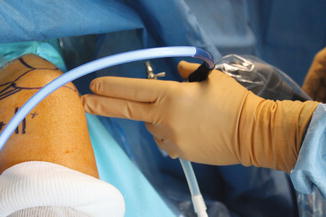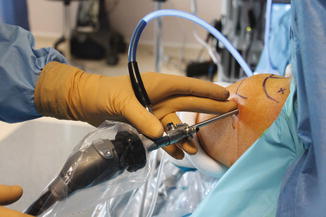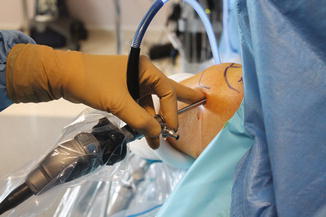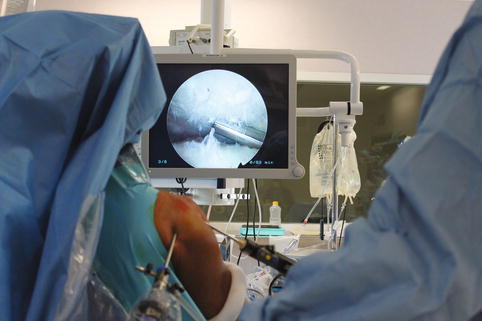(1)
Générale de Santé Hopital privé de, l’Estuaire, Le Havre, France
3.1 Stable Image
There is nothing more tedious than an unstable image for the surgeon but also for the assistants and observers (Fig. 3.1).



Fig. 3.1

Fig. 3.2
There is a good technique for holding the camera. As in billiards, the fingers form a tripod that stabilizes the rod. This also avoids putting the scope too close to the area affected by the surgery. Taking a step back makes things easier (as in life) (Fig. 3.2).
This way of holding the camera also avoids inconvenient removals of the scope, particularly during the anterior exploration of the shoulder.


Fig. 3.3
Moreover, this way of holding the scope tells us (without having to look at our hands) the position of the optical fiber and thus the scope’s orientation (Fig. 3.2).
It is preferable to have large hands, but everyone finds the position that suits them.
3.2 Straight Image
To operate properly, it is essential to always keep an image properly straight.
When filming our holidays, the camera always remains vertical, even by boat; the horizon is a landmark for the view. It is the same for our shoulder surgeries. You must not tilt your head during the operation; it is the image that must stay straight. This requires benchmarks.
In half-sitting position, the tendon of the subscapularis is the horizon of the shoulder. The challenge is to keep this benchmark even when using the strong oblique of the scope. The scope turns but not the camera, for this a simple way is to always have the cable of the camera vertical, or rather it must be the bisector of the arm and the chest (Fig. 3.4).


Fig. 3.4










